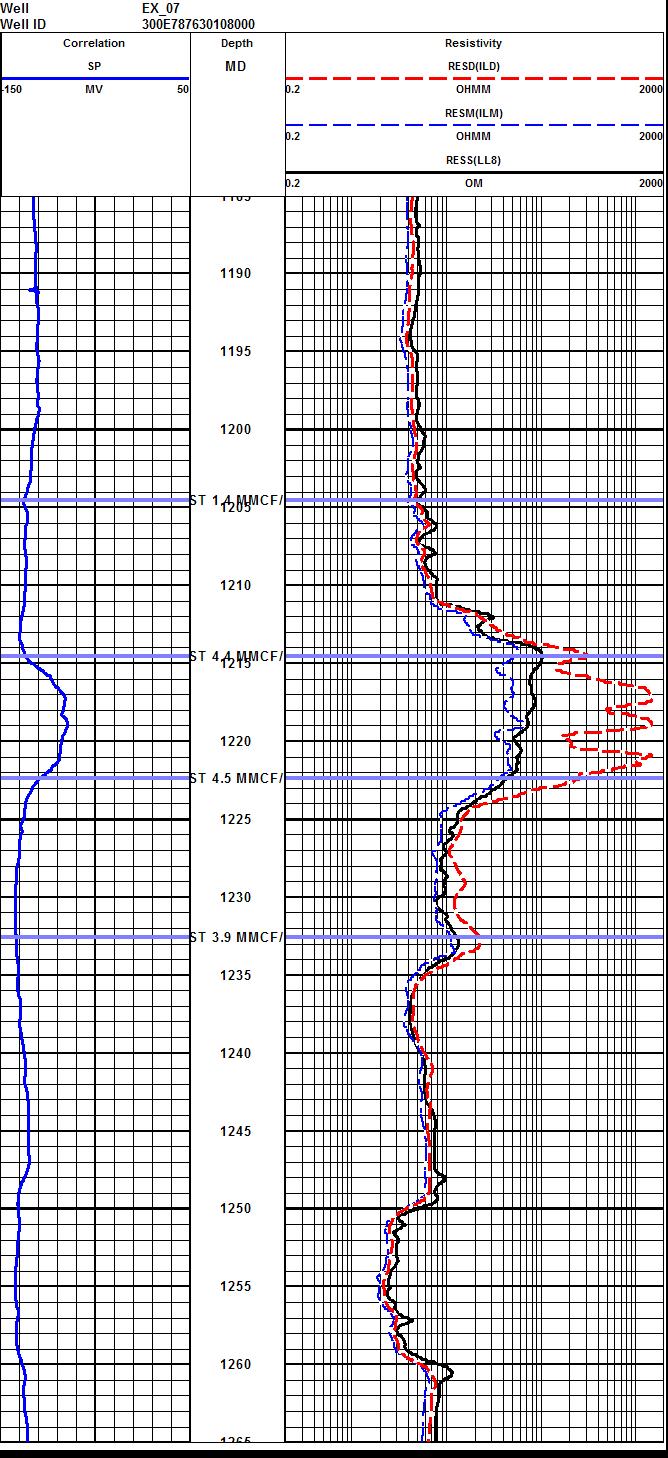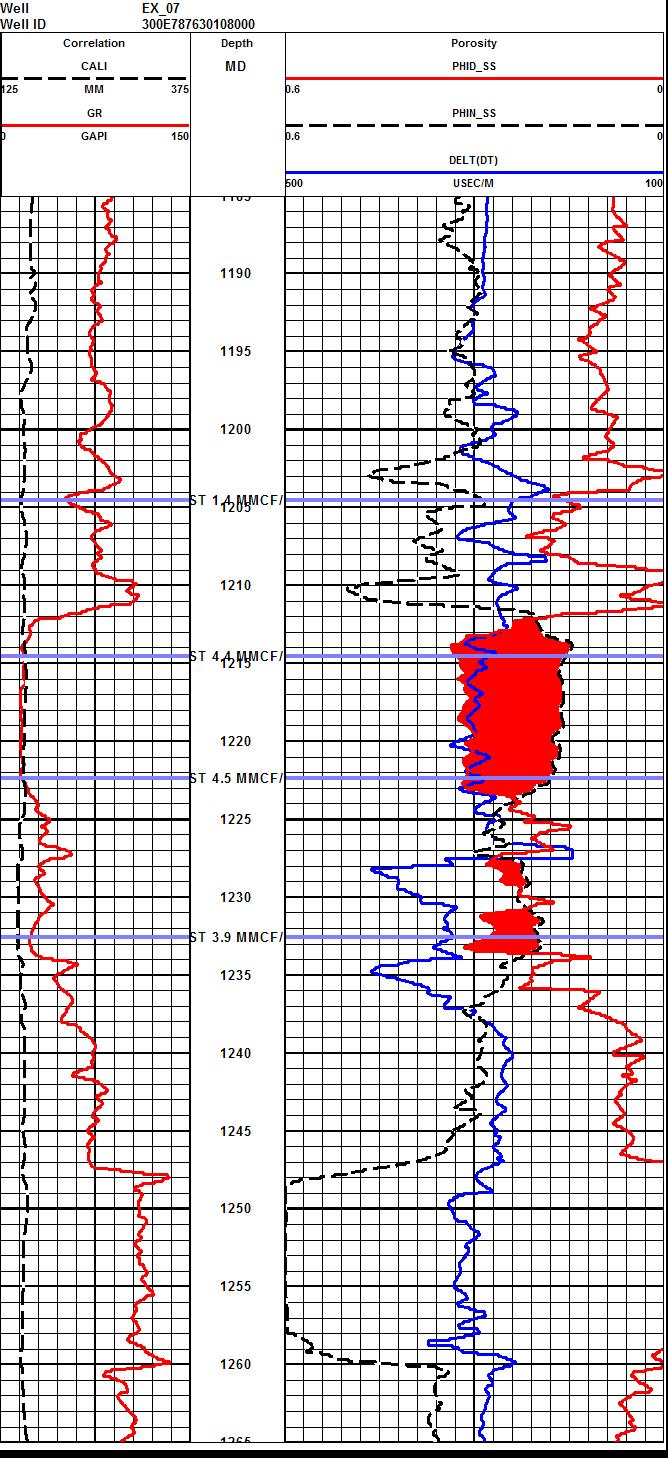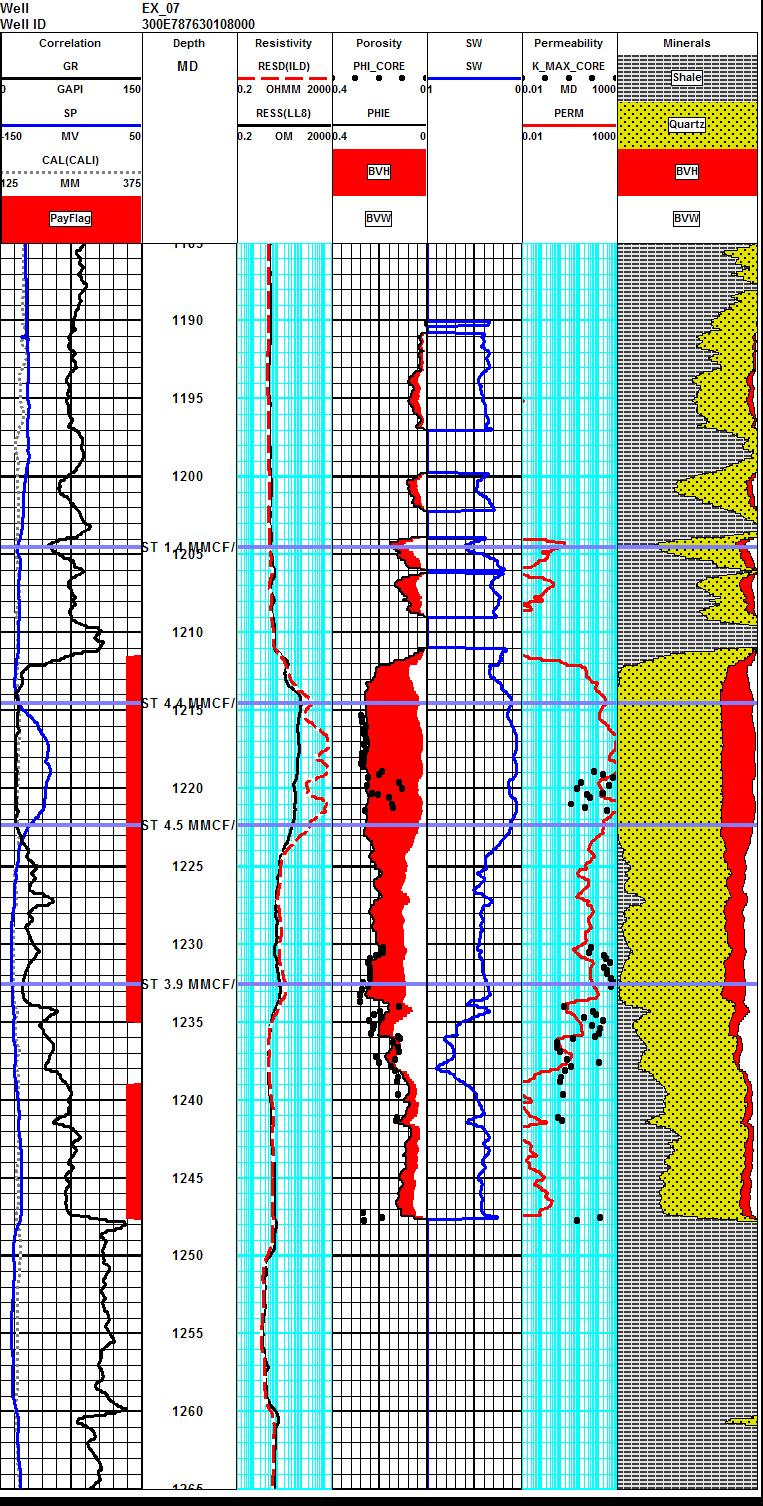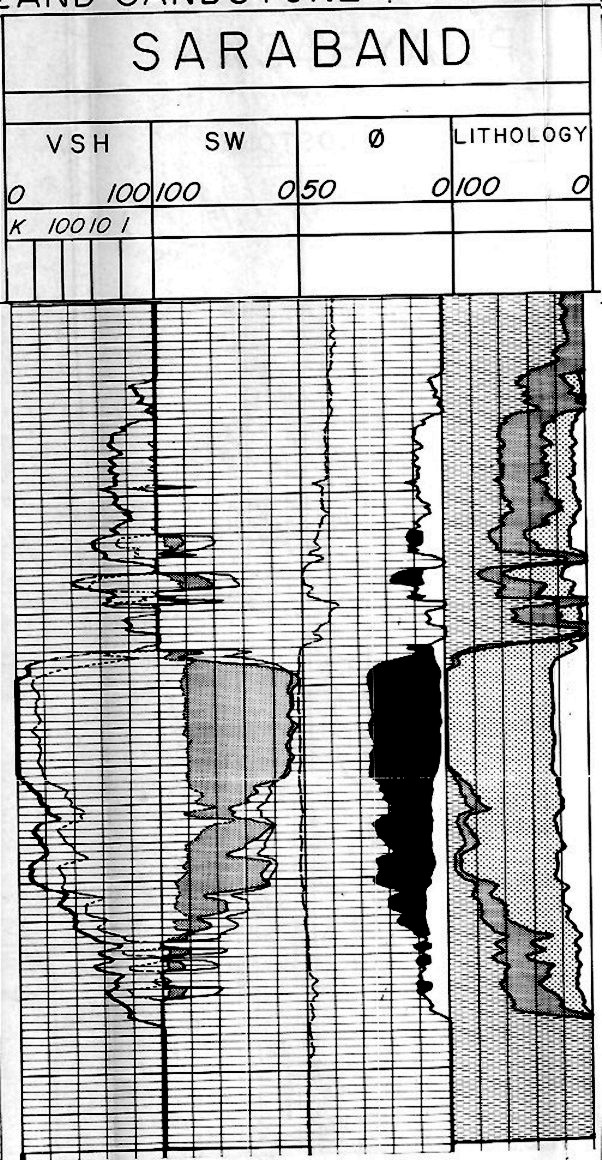|
 OBVIOUS GAS SAND WITH GAS SHALE (SILT
OBVIOUS GAS SAND WITH GAS SHALE (SILT
This case history shows a number of obvious
and not so obvious features of petrophysical analysis in
sands and shaly sands. The obvious is the huge amount of
crossover on the density neutron log in the clean sand.
Combined with the high resistivity, there is no doubt that
this is a gas zone. Even the sonic log shows gas effect in
the clean sand.
However, as we go below the obvious gas
crossover, we see lower resistivity, no crossover, and the
zone gets somewhat shalier according to the gamma ray log. So is the
zone wet because we have penetrated the free water level, or is it
wetter just because the grain size has become smaller, giving higher
irreducible water saturation in a gas zone? The best way to find out
is to test the zone and see what you get. After a year of drilling
and mapping these wells, I finally convinced management to test the
lower part of the sand and we got gas. In the absence of test data,
the log analysis could be pushed either way by moving RSH; lower
gives more gas, higher gives less gas. A depth plot of shale
corrected density and shale corrected neutron also helps, as some
gas crossover exists throughout the interval.
Above the obvious sand, there
is a silty / sandy section up to a few meters below the top of the
log segment. There is no seal on the top of the obvious gas sand, so
gas must be present in any pore space within the silt. This interval
is typical of many so-called "gas shales". Many gas shales are not
really shale, they are silts with some porosity and very low
permeability. With modern hydraulic fracturing techniques using
slick water, these zones can make commercial gas wells if they are
thick enough.
In addition to free gas in
the effective pore space, there is adsorbed gas attached to the
surfaces of any cleats or fractures in the shale. Adsorbed gas is
not part of the hydrocarbon volume determines by PHIe * (1 - Sw);-
it is found by empirical methods based on the assumed surface area
of the cleats, temperature, and pressure. Adsorbed gas can add from
a few percent to 100 percent more gas in place than the free gas
alone.
This example is about 50% clay
and 50% non-clay minerals. (above the obvious gas sand) The mud log on the well shows gas
throughout the interval. I managed to coax a test in the best
porosity of the silty interval and proved the presence of gas. This
was done back in 1975, long before gas shales hit the news. In
addition to free gas in the porosity, there will be adsorbed gas in
the clay fraction, which adds to the reserves for this field. This
drilling project proved up 13 Trillion cubic feet of gas in the
obvious gas sand. How much more lives in the shaly sand below and
the silty shale above? All of the gas is still there because none of
it has been produced due to difficulties in connecting to markets.





The clean gas zone is obvious because of its high resistivity and
density neutron crossover. The sonic log tracks the density log and
shows the same amount of crossover. The shalier sands above and
below the obvious sand are less clear - are they wet, or just wetter
because they are finer grained? The tests prove that there is no
moveable water below the obvious gas and there is producible gas in
the low porosity silt above the obvious gas. The silty interval
above he clean sand is typical of what is now called "gas shale".
Mud gas logs (not shown) indicate the presence of gas well above the
tested intervals.
The
older computed log analysis (right) illustrates the thinking of the era,
namely that the upper silty shale could not hold much gas, even
though the mud log showed gas throughout.
|

